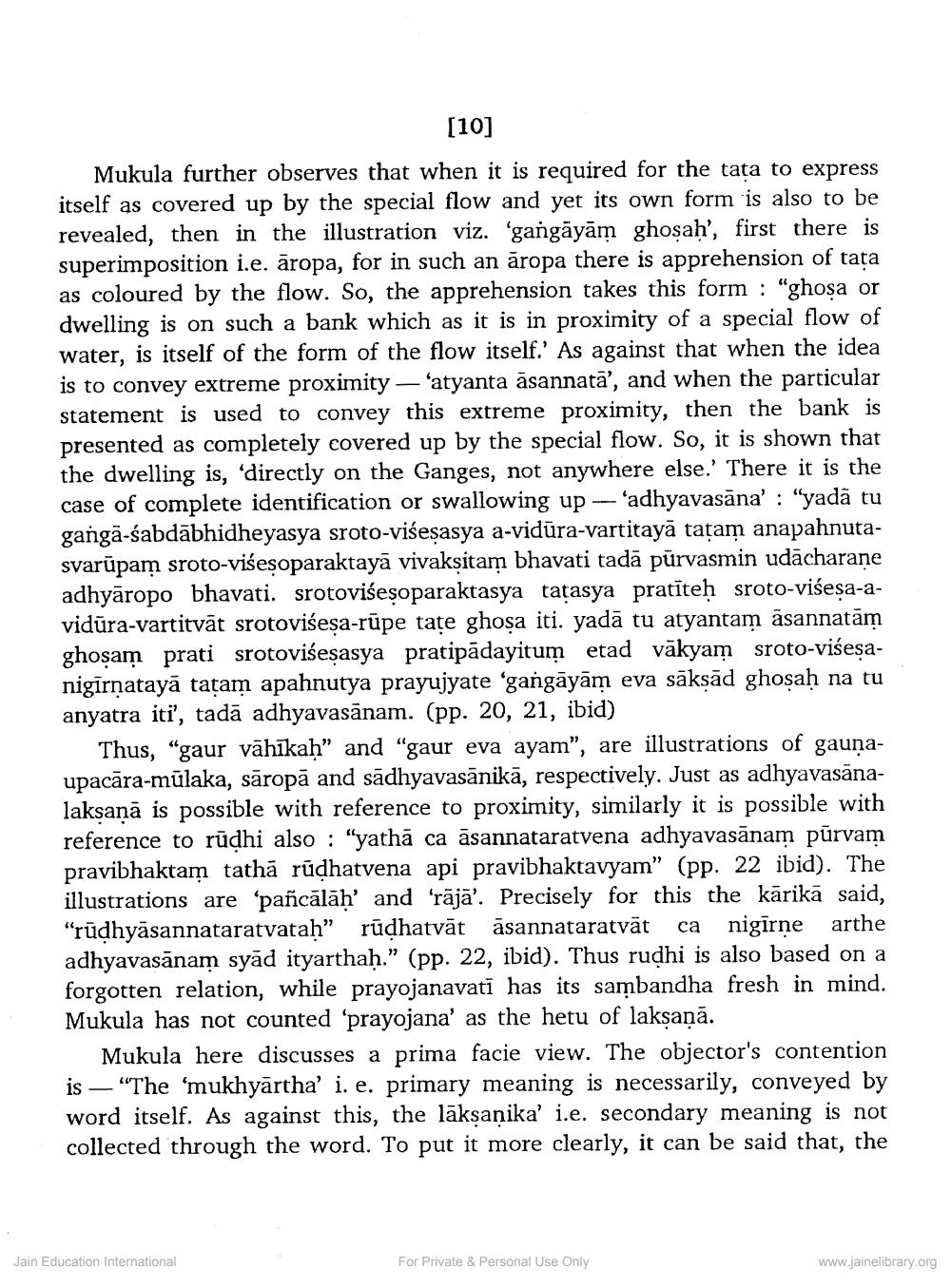________________
[10]
Mukula further observes that when it is required for the tata to express itself as covered up by the special flow and yet its own form is also to be revealed, then in the illustration viz. 'gangāyām ghosah', first there is superimposition i.e. āropa, for in such an āropa there is apprehension of tata as coloured by the flow. So, the apprehension takes this form : "ghosa or dwelling is on such a bank which as it is in proximity of a special flow of water, is itself of the form of the flow itself.' As against that when the idea is to convey extreme proximity — ‘atyanta asannatā', and when the particular statement is used to convey this extreme proximity, then the bank is presented as completely covered up by the special flow. So, it is shown that the dwelling is, directly on the Ganges, not anywhere else.' There it is the case of complete identification or swallowing up -- 'adhyavasāna' : "yadā tu gangā-sabdābhidheyasya sroto-višeșasya a-vidūra-vartitayā taţam anapahnutasvarūpam sroto-viśesoparaktayā vivaksitam bhavati tadā pūrvasmin udācharane adhyāropo bhavati. srotovišesoparaktasya tatasya pratīteḥ sroto-višeșa-avidūra-vartitvāt srotovišeşa-rūpe tate ghosa iti. yadā tu atyantam āsannatām ghosam prati srotoviśeșasya pratipādayitum etad vākyam sroto-viśesanigīrnatayā taţam apahnutya prayujyate 'gangāyām eva sāksād ghosaḥ na tu anyatra iti', tadā adhyavasānam. (pp. 20, 21, ibid)
Thus, “gaur vāhīkah” and “gaur eva ayam”, are illustrations of gaunaupacāra-mülaka, sāropā and sādhyavasānikā, respectively. Just as adhyavasānalaksaņā is possible with reference to proximity, similarly it is possible with reference to rūdhi also : "yathā ca asannataratvena adhyavasānam pūrvam pravibhaktam tathā rūdhatvena api pravibhaktavyam” (pp. 22 ibid). The illustrations are pañcālāh' and 'rāja'. Precisely for this the kārikā said, "rūdhyāsannataratvatah” rūdhatvāt āsannataratvāt ca nigirne arthe adhyavasānam syād ityarthaḥ.” (pp. 22, ibid). Thus rudhi is also based on a forgotten relation, while prayojanavati has its sambandha fresh in mind. Mukula has not counted 'prayojana' as the hetu of lakṣaṇā.
Mukula here discusses a prima facie view. The objector's contention is — "The ‘mukhyārtha' i. e. primary meaning is necessarily, conveyed by word itself. As against this, the lāksanika' i.e. secondary meaning is not collected through the word. To put it more clearly, it can be said that, the
Jain Education International
For Private & Personal Use Only
www.jainelibrary.org




